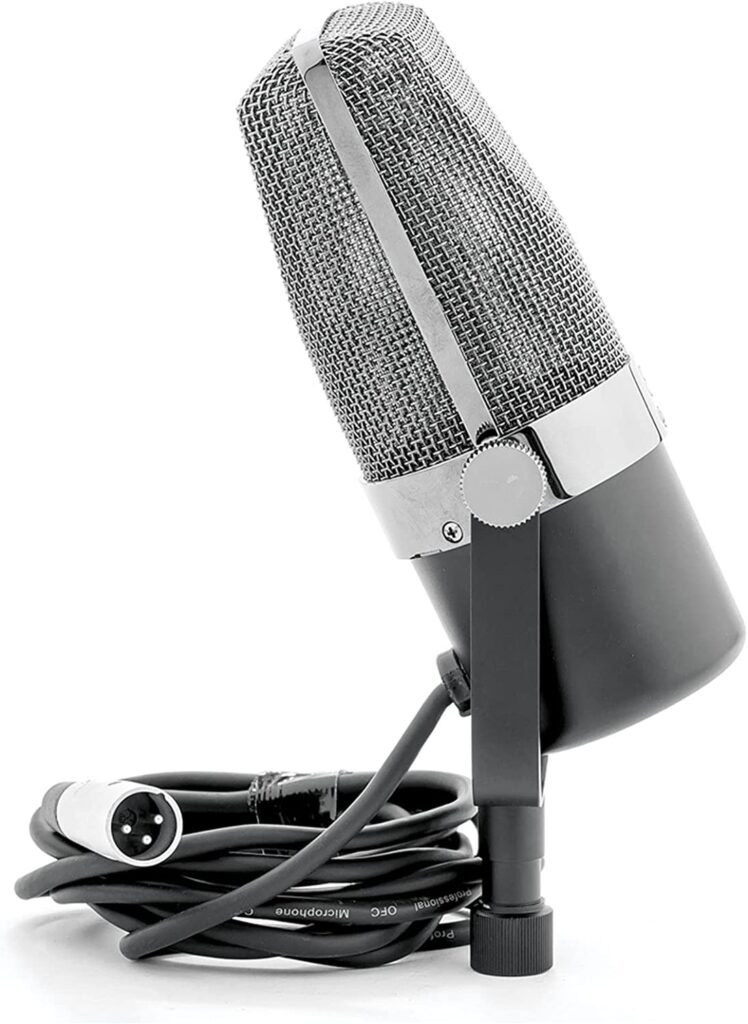Passive ribbon microphone have a low output compared to condenser mics. To record quiet sources without getting noise, you need a preamp with more gain than a typical preamp. Passive ribbon mics also need a preamp with a high impedance to get the most out of them.
Classes of a Passive ribbon microphone
There are 4 different kinds of passive ribbon microphones, such as:
- Single-ribbon microphones use a single ribbon to pick up sound. These microphones are known for their natural, smooth sound. Single-ribbon microphones often record vocals, saxophones, clarinets, and stringed instruments.
- Figure-8 ribbon microphones have two ribbons set up in a figure-8 pattern. This lets the microphone pick up sound equally well from the front and the back. Figure-8 ribbon microphones are often used to record choirs, orchestras, and other large groups in stereo.
- Multi-ribbon microphones use multiple ribbons set up differently to pick up sound. These microphones are known for their high level of detail and resolution. Multi-ribbon microphones are often used to record high-fidelity sources, like classical music, and to capture the subtle nuances of some instruments.
- Variable-pattern ribbon microphones with a variable polar pattern only have one ribbon. By moving the ribbon in the magnetic field, the user can switch between polar patterns, such as cardioid, omnidirectional, and figure-8. Ribbon microphones that can change their patterns can be used in different recording situations.
Pros of a Passive ribbon microphone
Some of the most common things about passive ribbon microphones are:
- Natural and smooth sound: Passive ribbon microphones are known for their warm, natural sound and smooth, nuanced response, which makes them good for recording vocals and acoustic instruments.
- Durability: Since passive ribbon microphones don’t have any active electronics, they tend to be more rugged and long-lasting than other microphones.
- No need for an outside power source: Passive ribbon microphones don’t need an external power source to work, so you don’t have to worry about carrying extra equipment or dealing with power supply problems.
- Versatility: Passive ribbon microphones are versatile because they can record various sounds, from vocals and acoustic instruments to orchestras and choirs.
- Affordability: Because they don’t have any active electronics, passive ribbon microphones tend to be less expensive than active ribbon microphones. This makes them a cheaper option for people who are just getting started with recording or don’t need the extra features that an active microphone offers.
Cons of a Passive ribbon microphone
Some things that could be bad about using a passive ribbon microphone are:
- Lower output level: Most passive ribbon microphones have a lower output level than other microphones, so you might need to add more gain to boost the signal. If this is not done carefully, it can also make noise and cause other problems.
- Handling noise sensitivity: Passive ribbon microphones can be sensitive to handling noise, which means that if they are bumped or handled too roughly, they may pick up vibrations and mechanical noise. This can be a problem when recording in noisy places or using the microphone on location.
- Limited availability: Passive ribbon microphones are less common than other microphones, so that you may have fewer options.
- Requires additional setup: Passive ribbon microphones take longer to set up because you must verify the microphone is in the right spot, and the signal is amplified correctly. This complicates recording and the sound setup.
- May need a preamplifier: Passive ribbon microphones may need a preamplifier to boost the signal to a level where it can be used. This can make your recording setup more complicated.
What is the primary advantage of using a passive ribbon microphone?
Passive ribbon microphones are known for their natural and smooth sound, making them ideal for recording vocals and acoustic instruments.
Are passive ribbon microphones durable compared to other microphone types?
Yes, passive ribbon microphones tend to be more rugged and long-lasting because they lack active electronics that can be more prone to damage.
Do passive ribbon microphones require an external power source?
No, passive ribbon microphones do not need an external power source, eliminating the need for extra equipment and power supply concerns.
What types of sound sources can be recorded effectively with passive ribbon microphones?
Passive ribbon microphones are versatile and can record various sound sources, including vocals, acoustic instruments, orchestras, choirs, and more.
Do passive ribbon microphones require additional equipment like preamplifiers?
Yes, to record quiet sources effectively and overcome their low output levels, passive ribbon microphones often require preamplifiers with higher gain.




